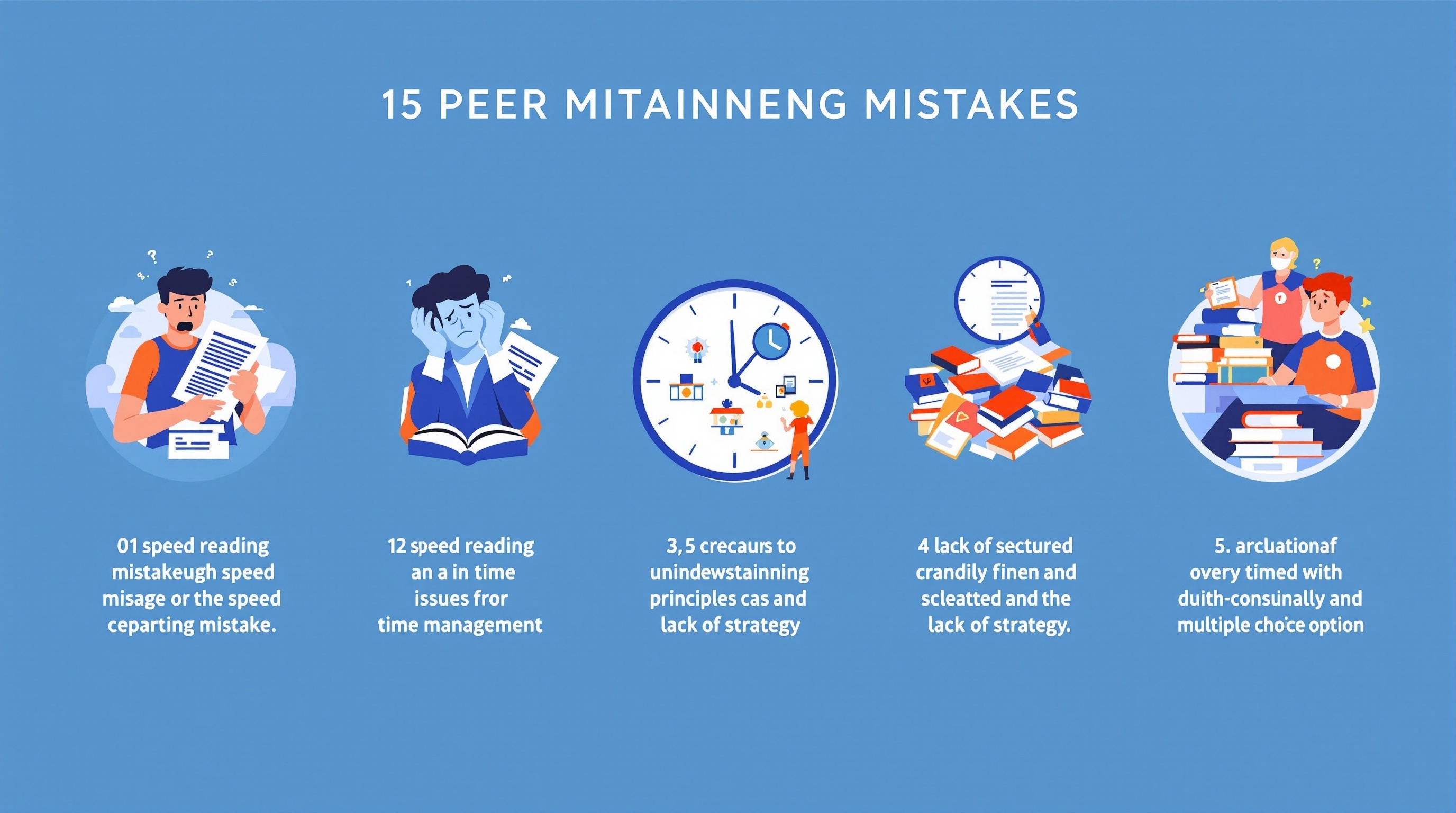Published by: Lawgic Coaching Institute | Last Updated: January 2025 | Reading Time: 12 minutes
Why Legal Reasoning Matters in CLAT Success
The Common Law Admission Test (CLAT) has evolved significantly over the years, and the Legal Reasoning section now plays a crucial role in determining your final rank. With approximately 28-32 questions carrying substantial weightage, this section can make or break your chances of securing admission to top National Law Universities (NLUs).
Legal Reasoning in CLAT tests your ability to apply legal principles to given facts, analyze legal scenarios, and draw logical conclusions based on established legal frameworks. Unlike other sections that primarily test knowledge or comprehension, this section evaluates your legal aptitude and reasoning skills – qualities essential for a successful legal career.
However, many bright students struggle with this section due to common mistakes that are entirely preventable. At Lawgic Coaching, we have observed patterns in student performance over years of CLAT coaching experience. This comprehensive guide identifies the five most frequent mistakes and provides practical solutions to help you excel in CLAT Legal Reasoning.
Understanding the CLAT Legal Reasoning Format
Before diving into common mistakes, it’s essential to understand what you’re dealing with. The CLAT Legal Reasoning section typically presents:
- Passage-based questions: Short paragraphs (450 words) followed by 4-5 questions
- Principle-fact scenarios: Legal principles applied to hypothetical situations
- Case law applications: Questions based on judicial decisions and legal precedents
- Constitutional and statutory provisions: Questions involving interpretation of laws

Mistake #1: Rushing Through Legal Principles Without Understanding
The Problem
Many aspirants treat legal principles like mathematical formulas – they read them once and immediately jump to the facts. This superficial approach leads to misapplication and incorrect answers. Legal principles often contain nuances, exceptions, and specific conditions that require careful analysis.
Example Scenario: A principle states: “A person is liable for negligence if they fail to exercise reasonable care, causing harm to another person, provided the harm was foreseeable.”
Students often miss key elements like “reasonable care,” “foreseeability,” and “causation,” focusing only on “harm caused” and selecting wrong answers.
How to Avoid This Mistake
- Break down the principle: Identify all conditions, exceptions, and key terms before reading the facts
- Use the highlighting technique: Mark essential words like “unless,” “provided,” “except,” “only if”
- Create a mental checklist: List all elements that must be satisfied for the principle to apply
- Practice active reading: Spend 60-90 seconds understanding the principle before moving to facts
Expert Tip: According to legal educators at Lawgic, students who spend adequate time understanding principles score 15-20% higher than those who rush through this crucial first step.
Mistake #2: Poor Time Management During the Section
The Problem
Legal Reasoning questions often involve complex scenarios that tempt students to spend excessive time on difficult questions. Poor time allocation leads to rushing through easier questions or leaving questions unanswered, both of which hurt your overall score.
The ideal time distribution for Legal Reasoning should be:
| Question Type | Recommended Time | Strategy |
|---|---|---|
| Simple Principle-Fact | 1.5-2 minutes | Quick application, clear-cut scenarios |
| Complex Legal Scenarios | 2.5-3 minutes | Multiple elements, careful analysis required |
| Passage-based Questions | 2-2.5 minutes per question | After initial passage reading (2-3 minutes) |
Time Management Solutions
- Use the two-pass strategy: First pass for easy questions (confidence builders), second pass for challenging ones
- Set micro-deadlines: Allocate specific time slots for each question type
- Practice with timers: Regular timed practice builds internal time awareness
- Develop question recognition skills: Quickly identify question difficulty to allocate appropriate time
Students often make the mistake of getting stuck on one challenging question for 5-7 minutes, which could cost them 2-3 easier questions worth the same marks. Remember, every question in CLAT carries equal weightage.
Mistake #3: Mixing Personal Legal Knowledge with Given Principles
The Problem
One of the most dangerous mistakes in CLAT Legal Reasoning is applying external legal knowledge instead of strictly following the given principle. Students who have studied basic law or have general legal awareness often fall into this trap, assuming their knowledge supersedes the provided principle.
Real Example: If a CLAT question provides a principle about contract law that differs slightly from actual Indian Contract Act provisions, you must follow the given principle, not your knowledge of the actual law.
Many students know that “consideration” is essential for contracts, but if the given principle doesn’t mention consideration as a requirement, you cannot apply that knowledge.
How to Stay Focused on Given Principles
- Treat each question as a closed universe: Only the provided information exists for that question
- Ignore your legal background: Consciously suppress external legal knowledge during problem-solving
- Stick to literal interpretation: If the principle doesn’t mention something, assume it doesn’t apply
- Practice principle isolation: Train yourself to work only within the given framework
This mistake is particularly common among students who have already studied law or come from legal families. While this background knowledge is valuable for legal studies, it can be counterproductive in CLAT if not managed properly.
Mistake #4: Not Following a Systematic Approach to Solve Questions
The Problem
Many students approach Legal Reasoning questions haphazardly, jumping between the principle, facts, and options without a structured method. This disorganized approach increases the chances of missing crucial details and selecting incorrect answers.

The CLAT Legal Reasoning Framework (CLASP Method)
- C – Comprehend the Principle: Read and understand all conditions and exceptions
- L – List Key Elements: Identify what must be proven or established
- A – Analyze the Facts: Match facts against each element of the principle
- S – Select Based on Logic: Choose the answer that best fits the principle-fact application
- P – Perform Quick Review: Verify your answer makes logical sense
Pro Tip: Students who consistently follow a systematic approach show 25-30% improvement in accuracy within 4-6 weeks of practice, according to Lawgic’s internal assessment data.
The systematic approach becomes particularly important in complex scenarios involving multiple parties, sequential events, or interconnected legal principles. Without a structured method, it’s easy to lose track of important details or misapply the principle.
Mistake #5: Inadequate Practice with Principle-Fact Application
The Problem
The most critical mistake is insufficient practice with the specific skill of applying legal principles to factual situations. Many students spend time reading about law but don’t practice the actual application process that CLAT demands.
Legal Reasoning is fundamentally different from legal knowledge. It requires:
- Logical thinking and analytical skills
- Ability to identify relevant facts
- Skills in connecting principles to specific situations
- Practice in eliminating incorrect options systematically
Building Strong Application Skills
- Daily practice routine: Solve 10-15 principle-fact questions daily
- Analyze your mistakes: Understand why wrong answers were selected
- Practice with diverse topics: Cover contract law, tort law, constitutional law, and criminal law principles
- Time-bound practice: Gradually reduce time per question while maintaining accuracy
- Mock test analysis: Focus specifically on Legal Reasoning performance trends
According to educational research by the National Center for Biotechnology Information, skill-based practice with immediate feedback is the most effective method for developing analytical reasoning abilities.
Additional Strategies for CLAT Legal Reasoning Success
Building Legal Vocabulary
Strong legal vocabulary helps in quick comprehension of principles and facts. Focus on understanding terms like:
- Negligence, liability, reasonable person standard
- Contract terms: offer, acceptance, consideration, capacity
- Constitutional concepts: fundamental rights, due process, natural justice
- Criminal law basics: mens rea, actus reus, causation
Reading Comprehension Skills
Since Legal Reasoning involves extensive reading, improve your reading speed and comprehension through:
- Daily newspaper reading focusing on legal and judicial news
- Reading legal magazines like Bar and Bench
- Following landmark case summaries and judicial pronouncements
Frequently Asked Questions
Q1: How much time should I allocate to Legal Reasoning preparation daily?
Dedicate 1.5-2 hours daily to Legal Reasoning practice. This should include 45 minutes for solving questions, 30 minutes for reviewing mistakes, and 15-30 minutes for reading legal concepts or landmark cases.
Q2: Should I study actual law subjects for CLAT Legal Reasoning?
While basic legal knowledge is helpful, CLAT Legal Reasoning primarily tests logical application skills. Focus more on practicing principle-fact application than memorizing legal provisions.
Q3: How can I improve my speed in Legal Reasoning without compromising accuracy?
Start with untimed practice focusing on accuracy, then gradually introduce time limits. Use the systematic approach (CLASP method) consistently, and practice eliminating obviously wrong options quickly.
Q4: What should I do if I encounter unfamiliar legal terms during the exam?
Don’t panic. Use context clues from the passage to understand the term’s meaning. CLAT typically provides enough context to answer questions even if you’re unfamiliar with specific legal terminology.
Q5: How important are previous year CLAT Legal Reasoning questions?
Very important. They help you understand question patterns, difficulty levels, and recurring themes. However, don’t just solve them – analyze the reasoning behind correct answers.
Q6: Can coaching help improve Legal Reasoning performance significantly?
Quality coaching like Lawgic provides structured practice, expert guidance on avoiding common mistakes, and personalized feedback that can accelerate improvement compared to self-study alone.
Q7: What’s the ideal accuracy percentage to target in Legal Reasoning?
Aim for 80-85% accuracy in your practice tests. This typically translates to answering 23-27 questions correctly out of 30-32 Legal Reasoning questions in CLAT.
Q8: Should I skip difficult Legal Reasoning questions during the exam?
Use the two-pass strategy: attempt easier questions first, then return to difficult ones. If a question seems too time-consuming, make an educated guess and move on rather than spending excessive time.
Q9: How do I handle principle-fact questions with multiple legal principles?
Break down each principle separately, identify which facts relate to which principles, and systematically apply each principle to its relevant facts. Don’t try to apply all principles simultaneously.
Q10: What resources are best for Legal Reasoning practice besides coaching materials?
Use CLAT previous year papers, reputable test series, legal reasoning books by established authors, and online platforms offering CLAT-specific practice questions. Avoid general reasoning materials.
Creating Your Legal Reasoning Study Plan
Based on the mistakes discussed and solutions provided, here’s a practical study plan framework:
Weekly Schedule Structure:
- Monday & Wednesday: Principle-fact practice (20-25 questions)
- Tuesday & Thursday: Passage-based Legal Reasoning
- Friday: Mixed practice and timed tests
- Saturday: Mock test and detailed analysis
- Sunday: Review mistakes and concept reinforcement
Monthly Progression Goals:
- Month 1: Build systematic approach, focus on accuracy over speed
- Month 2: Introduce time limits, work on speed-accuracy balance
- Month 3: Advanced practice with complex scenarios
- Month 4: Full-length tests and final preparation
Your Path to Legal Reasoning Excellence
Success in CLAT Legal Reasoning isn’t about having extensive legal knowledge – it’s about developing the right approach, avoiding common pitfalls, and practicing consistently with focus and determination.
Remember these key takeaways:
- Always understand principles completely before applying them
- Manage your time strategically across all questions
- Stick strictly to given principles, ignoring external knowledge
- Follow a systematic approach like the CLASP method
- Practice principle-fact application daily
Ready to transform your CLAT Legal Reasoning performance? Start implementing these strategies today, and you’ll see measurable improvement within weeks.
About Lawgic: Lawgic Coaching Institute has been guiding CLAT aspirants for over a decade, with hundreds of students securing admissions to top NLUs. Our comprehensive approach focuses on both conceptual understanding and strategic exam preparation.
Need personalized guidance? Visit lawgiccoaching.com to learn more about our CLAT preparation programs and expert mentorship opportunities.
This article was created to help CLAT aspirants improve their Legal Reasoning performance. For more CLAT preparation resources and expert guidance, visit Lawgic Coaching Institute.


